Vienna – on the Blue Danube
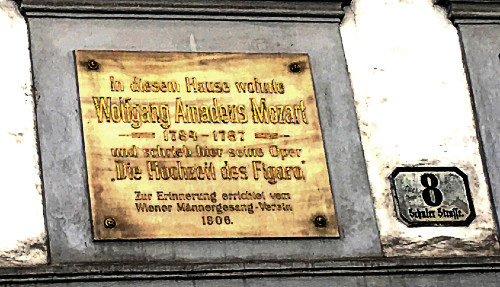
Capital of modern Austria, Vienna was also the focal point of the Hapsburg Empire which ruled for over six centuries. A UNESCO World Heritage Site since 2001 and in the top two of the world’s most liveable cities for the past decade, its name is synonymous with the waltzes of the Strauss family and the work of other great composers, such as Haydn, Mozart, Schubert, Beethoven and Mahler. It is such an example of cultural, historical and archeological treasures that our one day there during out river cruise was never going to be enough. Fortunately we had a coach tour booked for later in our trip that would take us here again, so this blog is only part one of our experiences in this wonderful city.
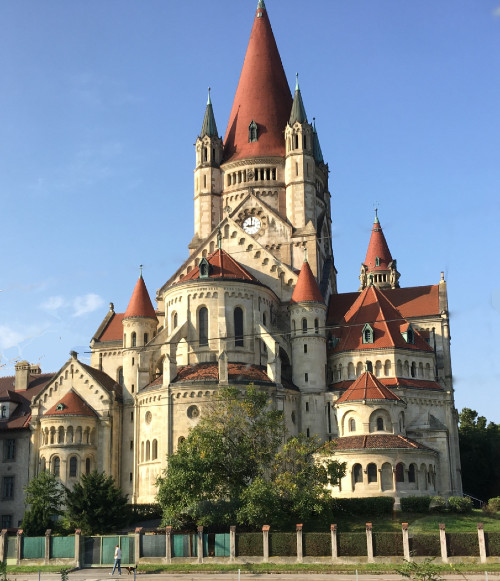
Our river ship docked near the church of St Francis of Assisi, an imposing Romanesque building. From there we were taken into the city centre for a panoramic coach tour of the major sights along the famous Ringstrasse, a broad boulevard built in 1857 which replaced the walls that once encircled the old city. Once finished, we were given free time to explore the city on our own.

The centre of Hapsburg rule was the Hofburg: a vast rambling palace in a complex of various architectural styles. The curved facade of the palace faces on to the Michaelsplatz, where excavations of Roman ruins contrast with the beauty of the palace architecture.

The complex of buildings also contains the Spanish Riding School where demonstrations by the Lipizzaner horses, which are bred and trained there, can be seen as well as their stables.

The other building of major importance in Vienna is the Stephansdom, or St Stephen’s Cathedral. This magnificent Gothic cathedral was built in the 12th century and its southern 137m tower completed in 1433. It stands in stark contrast to the modern bank building nearby. In fact the wide pedestrian boulevards display a fantastic mixture of new and old architecture with familiar modern shopping brands elegantly housed in Baroque and Gothic buildings.
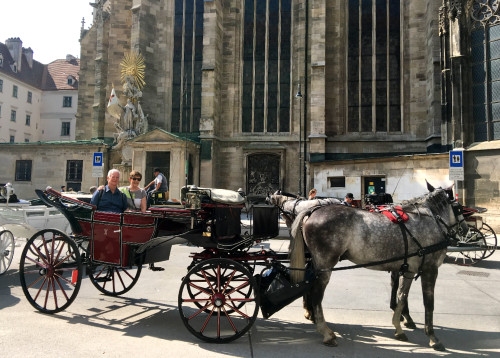
Outside the cathedral there were a number of 19th century carriages, or Fiakers, their bowler-hatted drivers touting for tourists to take a tour around the inner city in their carriages drawn by retired racehorses. We couldn’t resist.
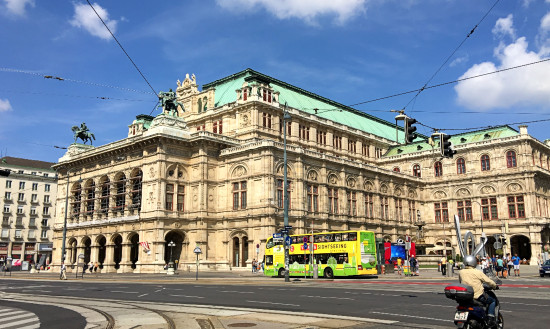
Still keen to see more, but starting to feel foot-weary by the time we walked to the Stadtpark, we found rental bicycles available for a tiny fee, so decided to ride the Ringstrasse. This time we could inspect the various sights more closely and take good pictures. The first substantial site was the Vienna State Opera (Staatsoper) building.
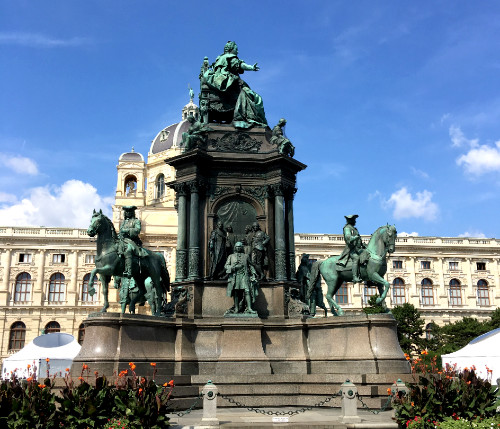
Further on, the Maria-Theresien-Platz provides a view of Vienna’s two main museums, the Kunsthistorisches Museum, a fine art museum, and the Naturhistorisches Museum, or Natural History museum. The sheer size of these two buildings was intimidating and would have taken longer than we had at our disposal to do them justice. Between the two, the Maria Theresa Memorial takes pride of place, with statues of composers Gluck, Haydn and Mozart featuring alongside her political and military advisors.
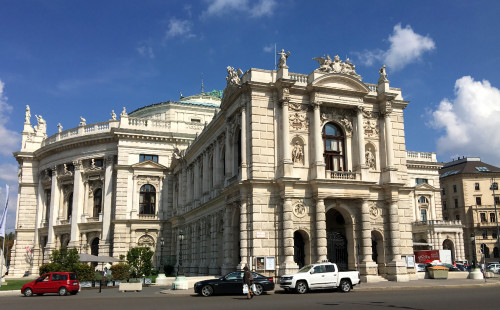
Further around the Ring, the architectural masterpieces continue with the Parliament building modelled on the Parthenon, the Burgtheater, the neo-Gothic New City Hall (Rathaus), the University building and the twin towered neo-Gothic Votive Church. Unfortunately for a photo collector, all but the Burgtheater were encumbered by construction equipment or scaffolding.

Returning our bikes to the Stadtpark, we decided we couldn’t put off stopping for lunch any longer. Our dream of having a real Wiener Schnitzel in Vienna had to be fulfilled. Claiming to be the oldest restaurant in Vienna, founded in 1447, Griechenbeisl counts Mark Twain, Beethoven, Mozart, Luciano Pavarotti and Johnny Cash among its patrons, many of whom are immortalized by their signatures on the walls the famous ‘Mark Twain Room’. Located on Fleischmarkt 11 and formerly known as the Golden Eagle, in the 17th century it was also famous for the songs of the wandering minstrel Augustin.
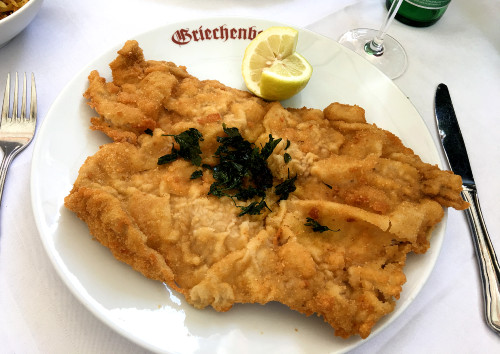
The classic Wiener Schnitzel is served here with potato salad, though we opted for fried potatoes and a green salad. The size of the schnitzel amazed us and was nearly too much. Hubby teamed it with the Pilsener Urquell beer that an innkeeper had introduced to Germany from Pilsen in Bohemia in 1852.
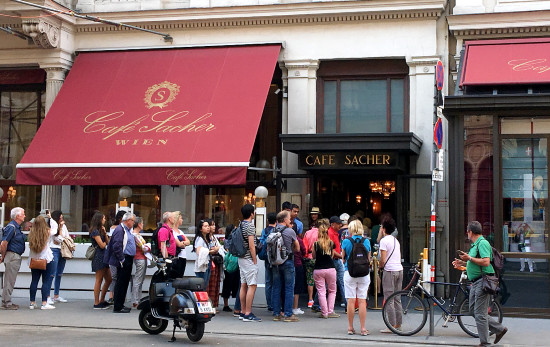
Rather than staying on at Griechenbeisl for dessert, we opted for more exercise to use up the calories and headed for another bucket list location – the Hotel Sacher! Café Sacher is very popular (as the queue outside attests) for the creation, in 1832 by Franz Sacher, of the Sacher Torte. This “Original” chocolate cake, with two layers of apricot jam and covered in a special chocolate icing, is served with whipped cream (schlagobers). As it was a warm day we chose iced coffees with further helpings of schlagobers! Just as well we had done so much walking and still had to walk back to the coach stop to return to our ship.
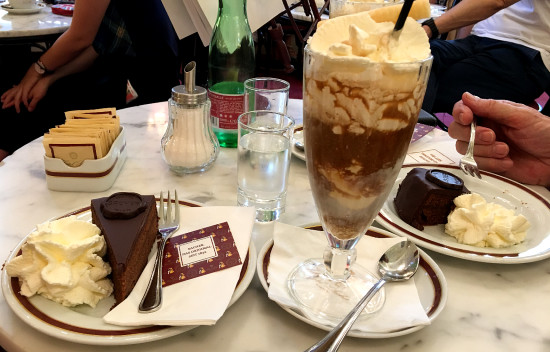
We had really loved our day in Vienna and had packed so much in, but there was so much more to see and do. Although we were sad to leave, we were comforted by the knowledge we would be back in just seven more days. First, though, we were due to visit some other wonderful places on our European journey, the next being Bratislava, Slovakia.


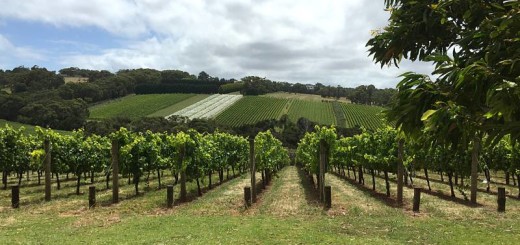
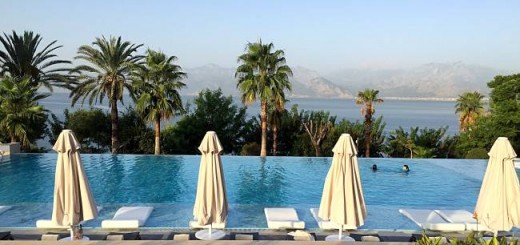


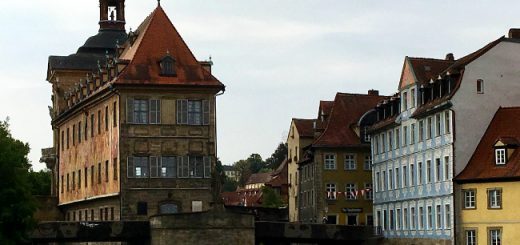

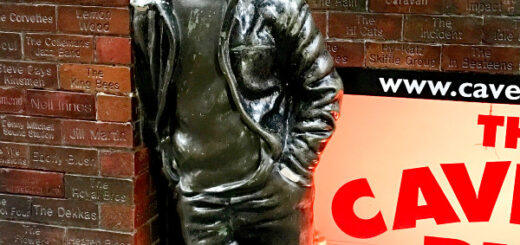























Wonderful travel log. .Great pic of you both in the carriage in the sunshine. What a lot you achieved before the whole world closed down.
Travelling so much has made it difficult to keep up with my blogs. This one was part of the same long holiday in which we saw you. Although it’s a sad state of affairs currently, at least it will give me a chance to catch up!